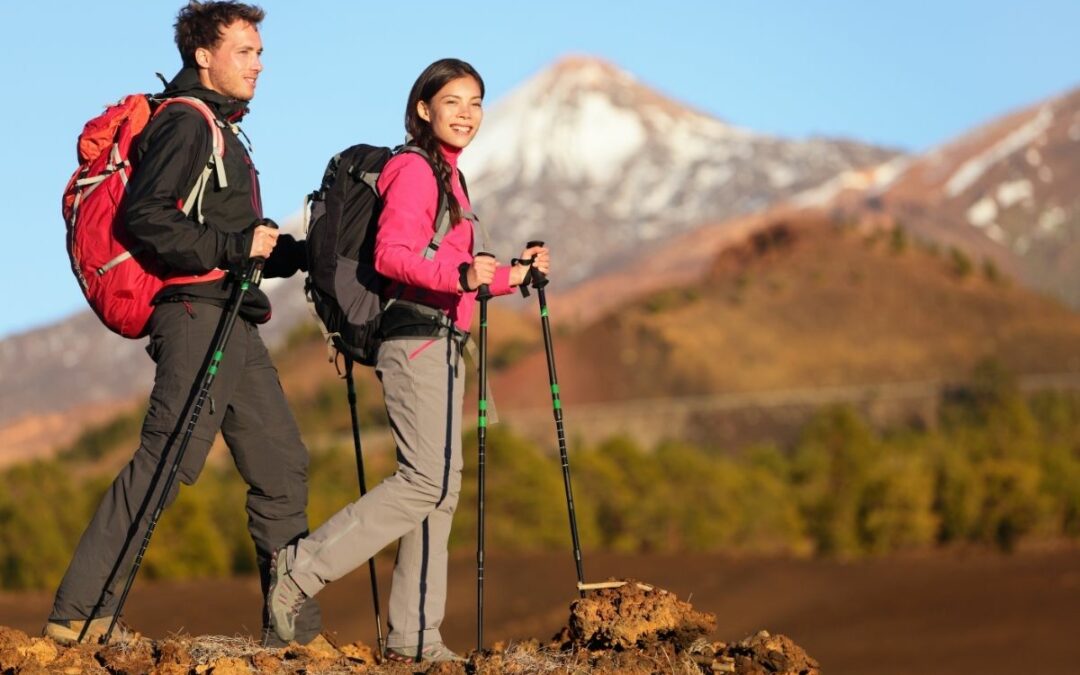
So, you’re planning a hiking trip and you want to make sure you have the right clothing for the changing weather conditions. But with so many different materials available, how do you know which ones are the best? Don’t worry, we’ve got you covered! In this article, we’ll dive deep into the world of hiking clothing materials and help you understand which ones are most suitable for different weather conditions. Whether it’s hot and humid or cold and wet, you’ll learn all about the best materials to keep you comfortable and protected on your hiking adventures.
When it comes to hiking clothing, one of the most important factors to consider is the weather conditions you’ll be facing. For hot and humid climates, materials like merino wool and synthetic fabrics with moisture-wicking properties are your best bet. These materials are lightweight, breathable, and quick-drying, which will help keep you cool and dry as you work up a sweat on the trail. On the other hand, if you’re hiking in cold and wet conditions, you’ll want to opt for materials like fleece and down. These materials provide insulation and retain heat, keeping you warm even in freezing temperatures.
In addition to weather conditions, durability is also a key consideration when choosing hiking clothing materials. You need gear that can withstand the wear and tear of the trail, so look for materials that are known for their durability, such as nylon and polyester. These synthetic materials are tough and can handle abrasions and snags without tearing. They also dry quickly, which is especially important if you get caught in a sudden rain shower. So, whether you’re hiking through forests or scaling rocky mountains, you can count on these materials to last.
Of course, comfort is another important factor to consider. After all, you’ll be spending hours on the trail, so you want clothing that feels good against your skin. Natural materials like merino wool and cotton can offer excellent comfort, as they are soft and hypoallergenic. Merino wool, in particular, also has antibacterial properties, which helps prevent unpleasant odors. However, keep in mind that these natural materials may not always be the best choice for wet conditions, as they can take longer to dry. In that case, synthetic fabrics offer a good compromise between comfort and performance.
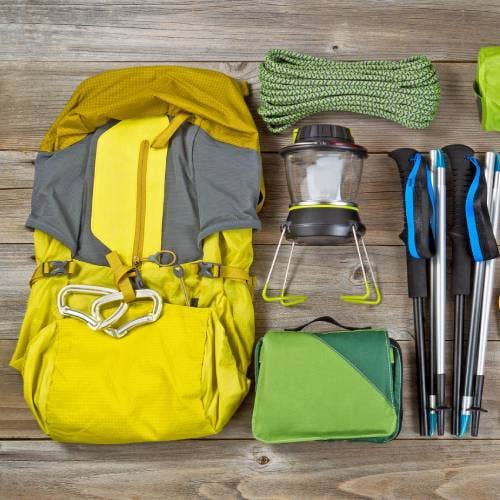
This image is property of wildcraft.com.
Why Choosing the Right Materials for Hiking Clothing is Crucial
When it comes to hiking, choosing the right clothing is essential for a comfortable and enjoyable experience. While factors such as fit and style are important, the materials used in your hiking clothing can make a significant difference in your overall comfort, performance, and protection on the trail.
From warm weather to cold weather, wet conditions to variable weather conditions, each environment requires different materials to ensure that you stay comfortable and prepared. In this ultimate guide, we will explore the best materials for hiking clothing in various weather conditions, as well as additional considerations and fabric technologies to keep in mind when making your choices.
The Importance of Choosing the Right Materials
Choosing the right materials for hiking clothing is crucial for several reasons. Firstly, the right materials can enhance your overall hiking experience by providing you with comfort, breathability, and protection against the elements. When you are comfortable and well-protected, you can fully immerse yourself in the beauty of nature and focus on enjoying your hike.
Secondly, the right materials can improve your performance on the trail. For example, moisture-wicking fabrics can keep you dry by pulling sweat away from your skin, preventing the discomfort of moisture accumulation and the risk of chafing. Insulated fabrics can effectively retain heat in cold weather, keeping you warm and preventing hypothermia.
Lastly, choosing the right materials is also essential for the durability and longevity of your hiking clothing. Hiking can subject your clothing to rugged terrain, abrasive surfaces, and harsh weather conditions. With the right materials, your clothing will be better equipped to withstand these challenges, extending its lifespan and saving you money in the long run.
How the Right Materials Can Enhance Your Hiking Experience
The right materials for hiking clothing can enhance your hiking experience in various ways. Here are some ways in which different materials can benefit you:
-
Breathability: Breathable fabrics allow air to circulate, keeping you cool and comfortable in warm weather.
-
Moisture-wicking: Fabrics with moisture-wicking properties pull sweat away from your skin, keeping you dry and preventing chafing.
-
Insulation: Insulated fabrics retain your body heat, keeping you warm in cold weather.
-
Flexibility: Materials that offer flexibility and freedom of movement allow you to navigate the trail with ease and agility.
-
Resistance to abrasion and tear: Hiking can subject your clothing to rough surfaces, so materials that are resistant to abrasion and tear will offer better durability.
-
Weight and packability: Lightweight and packable materials are ideal for backpacking and minimizing the weight of your gear.
Now that we understand the importance of choosing the right materials, let’s explore the best materials for hiking clothing in different weather conditions.
Factors to Consider When Choosing Hiking Clothing Materials
Before diving into specific materials for different weather conditions, several factors should be considered when choosing hiking clothing materials. These factors will help you make informed decisions based on your specific needs and preferences.
Durability and Longevity
Hiking clothing needs to withstand the rigors of the trail, including abrasive surfaces, branches, rocks, and adverse weather conditions. Look for materials that are known for their durability and longevity, such as nylon, polyester, and ripstop fabrics. These materials are resistant to abrasion and tearing, ensuring that your clothing will last through many hikes.
Breathability and Moisture-wicking Properties
Hiking can be physically demanding, causing you to sweat and generate heat. To regulate your body temperature and avoid overheating, choose fabrics that offer breathability and moisture-wicking properties. Look for synthetic materials like polyester and nylon, as well as natural fibers like merino wool, which are known for their breathability and ability to wick away moisture from your skin.
Insulation and Heat Retention
Hiking in cold weather requires clothing that can provide insulation and retain heat. Look for fabrics that offer insulation properties, such as down, fleece, and synthetic insulations like PrimaLoft. These materials create a layer of warmth by trapping your body heat, keeping you comfortable even in freezing temperatures.
Flexibility and Freedom of Movement
Hiking involves a wide range of movements, from climbing steep inclines to scrambling over rocks. Choose materials that offer flexibility and freedom of movement, allowing you to navigate the trail with ease. Fabrics with stretch properties, such as spandex or elastane blends, can provide the necessary flexibility without compromising durability.
Resistance to Abrasion and Tear
Hiking trails can be rough and unforgiving, with abrasive surfaces that can quickly wear down your clothing. Look for fabrics that are resistant to abrasion and tearing, such as ripstop nylon or reinforced polyester. These materials are designed to withstand the challenges of the trail, ensuring that your clothing remains intact and functional.
Weight and Packability
If you’re planning a backpacking trip or simply want to minimize the weight of your gear, consider the weight and packability of your hiking clothing materials. Lightweight materials, such as thin nylon or polyester blends, allow for easy packing and reduce the overall weight of your backpack.
Now that we have explored the factors to consider when choosing hiking clothing materials, let’s delve into the best materials for hiking clothing in different weather conditions.

This image is property of static.euronews.com.
Best Materials for Hiking Clothing in Warm Weather
When hiking in warm weather, it’s crucial to choose materials that prioritize breathability and moisture-wicking properties. This will ensure that you stay cool, dry, and comfortable throughout your hike. Here are some of the best materials for hiking clothing in warm weather:
Lightweight Fabrics for Breathability
When it comes to warm weather hiking, lightweight fabrics are a must. Look for materials like lightweight polyester, nylon, or blends that offer excellent breathability by allowing air to circulate freely. These fabrics ensure that sweat evaporates quickly, keeping you cool and preventing overheating.
Moisture-wicking Fabrics to Keep You Dry
To combat sweat buildup and reduce discomfort, opt for moisture-wicking fabrics in warm weather. These fabrics, such as polyester and merino wool, effectively pull moisture away from your skin, allowing it to evaporate quickly. This wicking action prevents the accumulation of sweat, reducing the risk of chafing and irritation.
Sun-protective Fabrics to Shield You from Harmful UV Rays
While staying cool and dry is important in warm weather, protecting your skin from the sun’s harmful UV rays is also vital. Look for fabrics that offer built-in sun protection, such as UPF-rated polyester or nylon blends. These fabrics provide an extra layer of defense against sunburn and skin damage.
When choosing hiking clothing for warm weather, prioritize lightweight and breathable fabrics with moisture-wicking properties and sun protection. These materials will keep you comfortable, dry, and protected throughout your hike.
Best Materials for Hiking Clothing in Cold Weather
When hiking in cold weather, it’s essential to choose materials that provide insulation, retain heat, and protect you from the elements. Here are some of the best materials for hiking clothing in cold weather:
Insulated Fabrics for Maximum Warmth
In cold weather, you need clothing that can provide maximum warmth and insulation. Insulated fabrics, such as down or synthetic insulations, are excellent choices. Down offers exceptional warmth-to-weight ratio, while synthetic insulations like PrimaLoft are known for their ability to retain heat even when damp.
Fleece and Wool for Effective Insulation
Fleece and wool are known for their exceptional insulation properties, making them ideal for cold weather hiking. Fleece traps an insulating layer of air, while wool fibers contain air pockets that retain heat. Merino wool, in particular, is a popular choice for its ability to regulate body temperature, wick away moisture, and provide superior insulation, even when wet.
Waterproof and Windproof Fabrics to Shield you from the Elements
Cold weather often brings rain, snow, and strong winds, so it’s crucial to have clothing that can shield you from these elements. Look for waterproof and windproof fabrics, such as Gore-Tex or eVent, which offer excellent protection against rain, snow, and wind while still allowing moisture to escape.
When selecting hiking clothing for cold weather, prioritize insulation, heat retention, and protection from the elements. Choose fabrics like down, synthetic insulations, fleece, wool, and waterproof and windproof materials to stay warm and dry on your cold weather hikes.
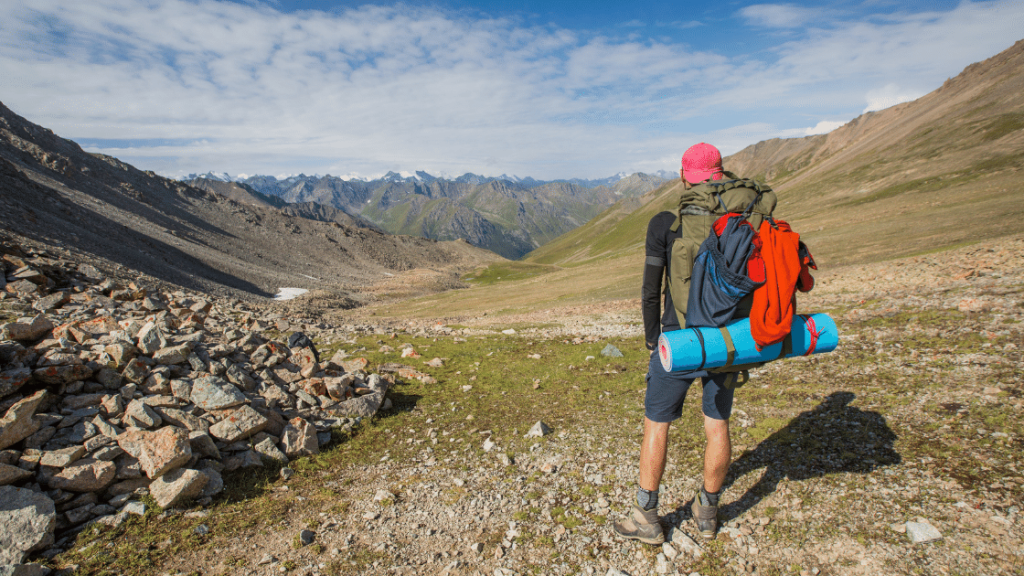
This image is property of images.squarespace-cdn.com.
Best Materials for Hiking Clothing in Wet Weather
Hiking in wet weather requires clothing that can keep you dry, comfortable, and protected from the rain. Here are some of the best materials for hiking clothing in wet weather:
Waterproof and Breathable Fabrics for Dryness and Comfort
When it comes to hiking in wet weather, the key is to find fabrics that are both waterproof and breathable. Look for materials like Gore-Tex or eVent, which offer excellent waterproof protection while allowing your body’s moisture to escape. These fabrics keep you dry by preventing rainwater from seeping in while ensuring that sweat and moisture can evaporate.
Seam-sealed Fabrics to Keep Water Out
In addition to choosing waterproof fabrics, pay attention to the construction of your hiking clothing. Look for garments with fully seam-sealed or taped seams, as these prevent water from seeping through the stitching. Seam-sealed fabrics add an extra layer of protection against rain, enhancing the waterproof capabilities of your clothing.
Fast-drying Fabrics to Prevent Hypothermia
When hiking in wet conditions, it’s important to choose fast-drying fabrics to prevent hypothermia. Fabrics like polyester or nylon blends dry quickly, ensuring that moisture doesn’t linger on your clothing and weigh you down. This fast-drying capability keeps you comfortable and reduces the risk of hypothermia in damp conditions.
To stay dry and comfortable while hiking in wet weather, choose waterproof and breathable fabrics with seam-sealed construction. Additionally, opt for fast-drying materials to prevent moisture buildup and reduce the risk of hypothermia.
Best Materials for Hiking Clothing in Variable Weather Conditions
Hiking in variable weather conditions, where temperatures and weather patterns can change rapidly, requires adaptable clothing that can keep you comfortable in different situations. Here are some of the best materials for hiking clothing in variable weather conditions:
Layering with Merino Wool for Versatility
Merino wool is known for its versatility and ability to regulate body temperature. It is an excellent choice for variable weather conditions as it keeps you warm in cool temperatures and wicks away moisture to keep you cool in warmer temperatures. Layering with merino wool allows you to easily adjust your clothing to match the changing weather.
Hybrid Fabrics for Temperature Regulation
Hybrid fabrics combine different materials to provide the benefits of each. For example, a hybrid fabric may have a moisture-wicking polyester layer on the inside and a wind-resistant nylon layer on the outside. These fabrics offer excellent temperature regulation and protection against the elements.
Convertible Clothing for Adaptability
Convertible clothing, such as pants that can be zipped off into shorts, offers adaptability in variable weather conditions. This type of clothing allows you to quickly adjust your clothing as temperatures change throughout the day, providing ultimate comfort and flexibility.
When hiking in variable weather conditions, prioritize versatility and adaptability. Layer with merino wool, choose hybrid fabrics, and consider convertible clothing to ensure that you stay comfortable in changing temperature and weather conditions.
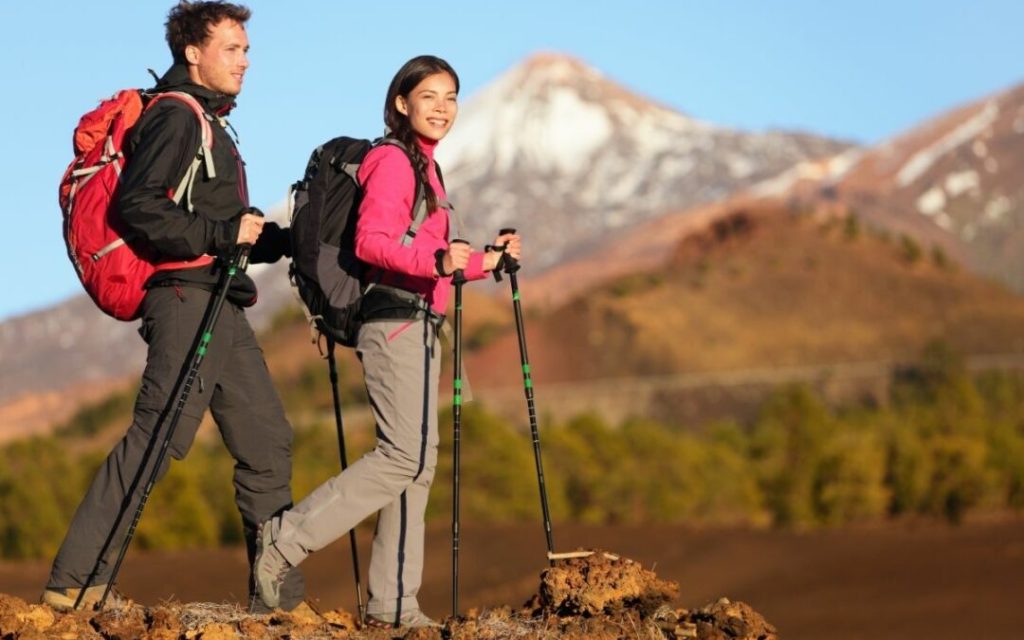
This image is property of www.merecyclers.com.
Choosing the Right Materials for Hiking Footwear
In addition to clothing, choosing the right materials for hiking footwear is vital for a comfortable and safe hiking experience. Here are some factors to consider when selecting hiking footwear materials:
Durable and Water-resistant Uppers for Protection
Hiking boots or shoes with durable and water-resistant uppers are crucial for protecting your feet from moisture, rain, and rugged terrain. Look for materials like full-grain leather or synthetic leather, which offer excellent durability and water resistance.
Breathable and Moisture-wicking Linings for Comfort
Hiking footwear with breathable and moisture-wicking linings is essential for preventing sweaty and uncomfortable feet. Moisture-wicking linings, such as those made of mesh or synthetic materials, help to keep your feet dry by pulling moisture away from your skin. This prevents blisters and discomfort caused by wet feet.
Sturdy and Supportive Midsoles for Stability
Midsoles provide support and stability for your feet while hiking. Look for footwear with midsoles made of materials like EVA (ethylene-vinyl acetate) or polyurethane, which offer excellent cushioning and shock absorption. These materials provide the necessary support for long hikes, reducing fatigue and preventing foot pain.
When choosing hiking footwear, prioritize durability, water resistance, breathability, moisture-wicking properties, and sturdy midsoles. The right materials will keep your feet comfortable, protected, and supported throughout your hiking adventures.
Additional Considerations for Choosing Hiking Clothing Materials
In addition to the factors mentioned above, there are several other considerations to keep in mind when choosing hiking clothing materials.
Ethical and Sustainable Material Choices
Consider the environmental impact and ethical considerations associated with the materials you choose. Look for brands that prioritize sustainable materials, such as recycled polyester or organic cotton. Additionally, consider the ethical implications of certain materials, such as down or fur, and opt for synthetic alternatives if necessary.
Ease of Care and Maintenance
Hiking clothing should be easy to care for and maintain, especially during long hikes or multi-day trips. Look for materials that are machine washable and quick-drying, saving you time and effort in cleaning and drying your clothing.
Cost and Budget-Friendly Options
Consider your budget when selecting hiking clothing materials. While premium materials often come with a higher price tag, there are budget-friendly options available that still offer excellent performance and functionality. Consider the trade-offs between cost and quality to find the right balance for your needs.
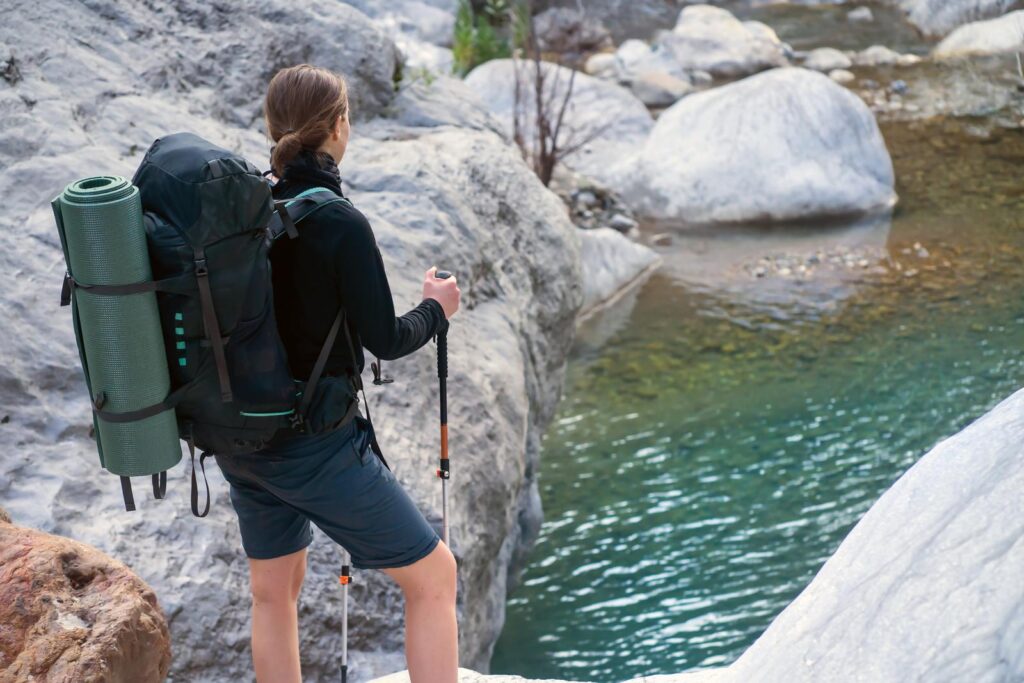
This image is property of clothesforhiking.com.
Understanding Fabric Technologies and Innovations
Fabric technologies and innovations play a significant role in enhancing the performance and functionality of hiking clothing materials. Here are some notable fabric technologies to keep in mind:
Anti-microbial Fabrics for Odor Control
Anti-microbial fabrics are treated with special agents that prevent the growth of odor-causing bacteria. This technology keeps you fresh and odor-free, even during long hikes or multi-day trips.
Stretch and Recovery Fabrics for Enhanced Mobility
Fabrics with stretch and recovery properties offer excellent mobility and comfort. These materials allow you to move freely and easily on the trail, preventing restrictions and improving overall performance.
Reflective Fabrics for Visibility in Low-light Conditions
If you plan to hike during dusk or dawn or in low-light conditions, consider clothing with reflective fabrics. Reflective elements increase your visibility to others, enhancing safety on the trail.
When choosing hiking clothing materials, keep an eye out for these fabric technologies and innovations that can enhance your overall hiking experience.
Conclusion
Choosing the right materials for hiking clothing is crucial for a comfortable and enjoyable hiking experience. By considering factors such as durability, breathability, insulation, flexibility, and resistance to abrasion, you can select the materials that best suit your needs in different weather conditions. Whether it’s warm weather, cold weather, wet conditions, or variable weather, there are specific materials that offer the necessary properties to keep you comfortable, protected, and performing at your best on the trail.
Remember to also consider additional factors such as ethical and sustainable material choices, ease of care and maintenance, and your budget when making your final decisions. By understanding fabric technologies and innovations, you can explore options that offer added benefits such as odor control, enhanced mobility, and visibility in low-light conditions.
So, the next time you plan a hiking adventure, make sure to choose the right materials for a comfortable and enjoyable experience. With the ultimate guide to choosing the best materials for hiking clothing, you can confidently embark on your next hiking journey equipped with the knowledge to make informed decisions. Happy hiking!





